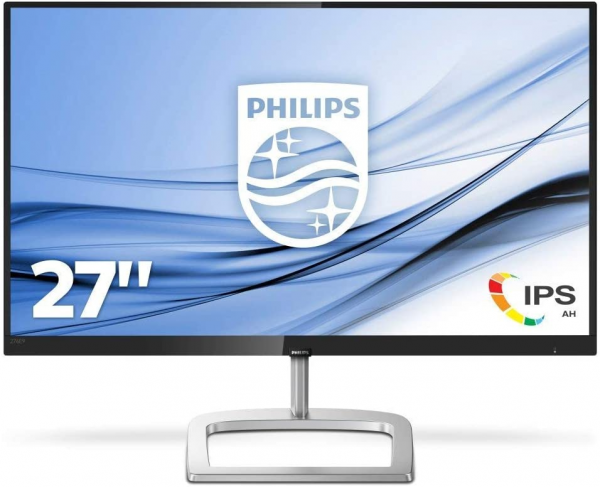Philips
Philips 276E9: an energy-efficient 27-inch monitor
Aprox. 179€
See specificationsThe Philips 276E9 monitor is the successor to the 276E7 model that we tested in spring 2016 and which surprised us with its excellent image quality, careful design and low price. Does the Philips 276E9 manage to do as well?
Positive points
Design.
Well managed gamma and temperature.
Wide viewing angles.
Good value for money.
Reduced consumption.
Bad points
No USB hub.
Limited orientation (no height adjustment, no pivot).
Limited contrast.
Lack of color fidelity.
Our review
Presentation
The Philips 276E9 monitor has a 27-inch (≈69 cm) IPS panel with a Full HD definition of 1,920 x 1,080 px. The manufacturer announces a contrast ratio of 1,000: 1, a brightness of 250 cd / m², viewing angles of 178 ° and colorimetric coverage of 124% of sRGB and 93.6% of NTSC. This model is content with a refresh rate of 60 Hz, but it is FreeSync compatible over a fairly reduced range between 48 and 76 Hz. It is also devoid of flicker (Flicker-Free) and offers a blue light filter.
The Philips 276E9 is available in three versions (see box), all sold around € 190.
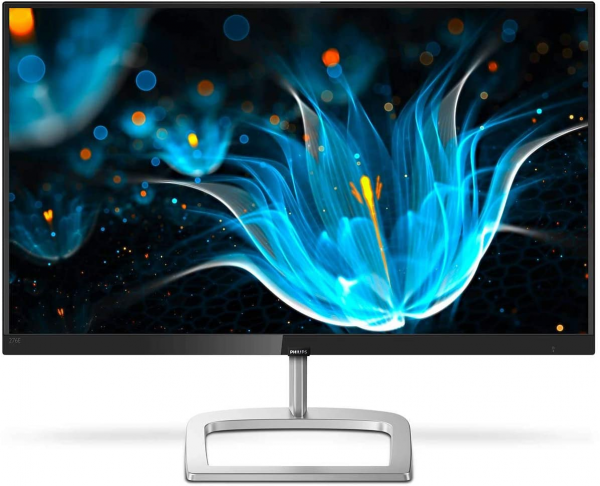
Ergonomics
The Philips 276E9 adopts a fairly classic design; the screen edges are black and only the aluminum base gives a semblance of character to the whole. The coating of the slab is matt, which prevents reflections.
The aluminum base has a depth of 22 cm, which is fairly average for a 27-inch model, especially when compared to the depth of only 15 cm from the base of the 32-inch AOC Q3279VWF.
Ergonomics is the weak point of this monitor. The Philips 276E9 is content with adjusting the tilt between -5 and + 20 °. The stand is not rotatable and, above all, it is impossible to adjust the height of the screen, a feature that is far from anecdotal.
The back of the monitor is very classic, but the glossy black plastic is a real dust magnet and a big fan of fingerprints. The connection, directly visible, is oriented perpendicular to the slab. There is no cable management system; it will be tricky to make them disappear.
The connection consists of an HDMI input, a VGA input, a DisplayPort input, a mini-jack audio input and a headphone output. The screen also has two built-in 3 W speakers, the quality of which does not replace a dedicated speaker kit, but they can troubleshoot to watch a short video, podcasts or TV shows.
It took us a little while to find the clickable joystick driving the OSD (settings menu): it is indeed neither on the right, nor on the left, nor under the slab, but in the center behind the screen, which is not very practical . Fortunately, this joystick remains the most efficient way to access all settings very quickly. Going to the right gives access to changing the source, mode (presets) and settings (brightness, contrast, sharpness, overdrive, gamma, etc.). The menus are readable and the navigation is fluid.
On a standard desk 140 cm wide and 60 cm deep, the 27-inch Philips 276E9 monitor takes up only a small part of the desktop, far from the 34-inch footprint like the Alienware AW3418DW or the Philips 349X7F.
By lowering the brightness to 35 to obtain a white at 150 cd / m², the Philips 276E9 consumes only 12 W, or a relative consumption of only 46 W / m²; this makes it the most economical monitor we have tested (against 100 W / m² on average in our comparison). The monitor consumes at least 8.5 W of brightness (66 cd / m²) and 20 W at 289 cd / m².
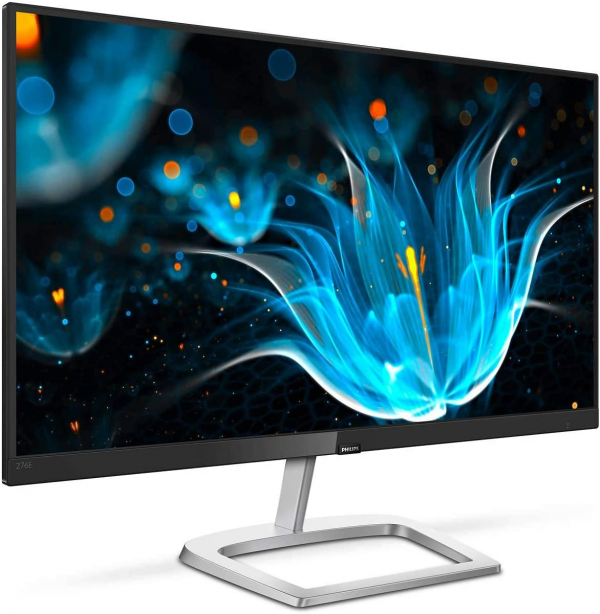
Colors and contrast
Default: average gray temperature: 7,150 K.
Default: gamma curve at 2.2.
Default: Delta E average at 4.5.
Out of the box, the rendering is not flawless. The temperature curve is stable and the average measured at 7,150 K is not very far from the 6,500 K reference. The gamma curve does even better with appreciable stability and a value of 2.2 based on the reference one. But the color rendering leaves something to be desired: the average delta E is 4.5 (as a reminder, it is considered excellent below 3) and, above all, certain shades including magenta, bright green and more blue have really excessive values.
Manual adjustment: average gray temperature: 7,050 K.
Manual adjustment: gamma curve at 2.2.
Manual setting: Delta E medium at 4.7.
To improve the rendering, we lowered the brightness to 35 in order to obtain a white close to 150 cd / m². We then set the temperature to 6,500 K to get closer to the benchmark. The temperature thus retains its stability and drops very slightly, to 7,050 K. Philips also offers a setting at 5,000 K, but the temperature then drops well to 5,000 K for a rendering very far from the 6,500 K reference. The gamma remains the same, but the lack of color fidelity worsens with a delta E which drops to 4.7.
Calibrated: average gray temperature: 6,600 K.
Calibrated: gamma curve at 2.2.
Calibrated: average delta E at 4.6.
The calibration of the screen using a probe makes it possible to smooth the gamma and temperature curves, but not the lack of color fidelity; some shades improve slightly, but others deteriorate, including cyan, and blue remains very poorly restored; this will not be enough for graphic tasks (image editing, calibration, etc.). This problem seems to us to come from the management of Wide Color Gamut which cannot be deactivated via the OSD. You can download this color profile by following this link.
The contrast ratio of 950: 1 is fairly average for an IPS panel. In comparison, the Asus Designo MX27UQ exceeds 1,000: 1 and the best IPS (PLS), like the Philips 276E7, reaches 1,200: 1. In all cases, we are far from the contrasts offered by monitors fitted with a VA panel, such as the Textorm TX32 or the AOC Q3279VWF which exceed a rate of 4,000: 1. In the picture, this results in faded blacks. This is not problematic for office use and more generally in broad daylight; it's only really annoying in the dark and watching movies.
The average difference in lighting uniformity is 10% across the entire panel, an average value for a 27-inch screen. We found slight light leaks in the corners, but no clouding on our test model. As far as viewing angles are concerned, VA technology is a bit more directive than IPS technology, but the viewing angles remain wide enough, at least enough not to suffer from color variations.
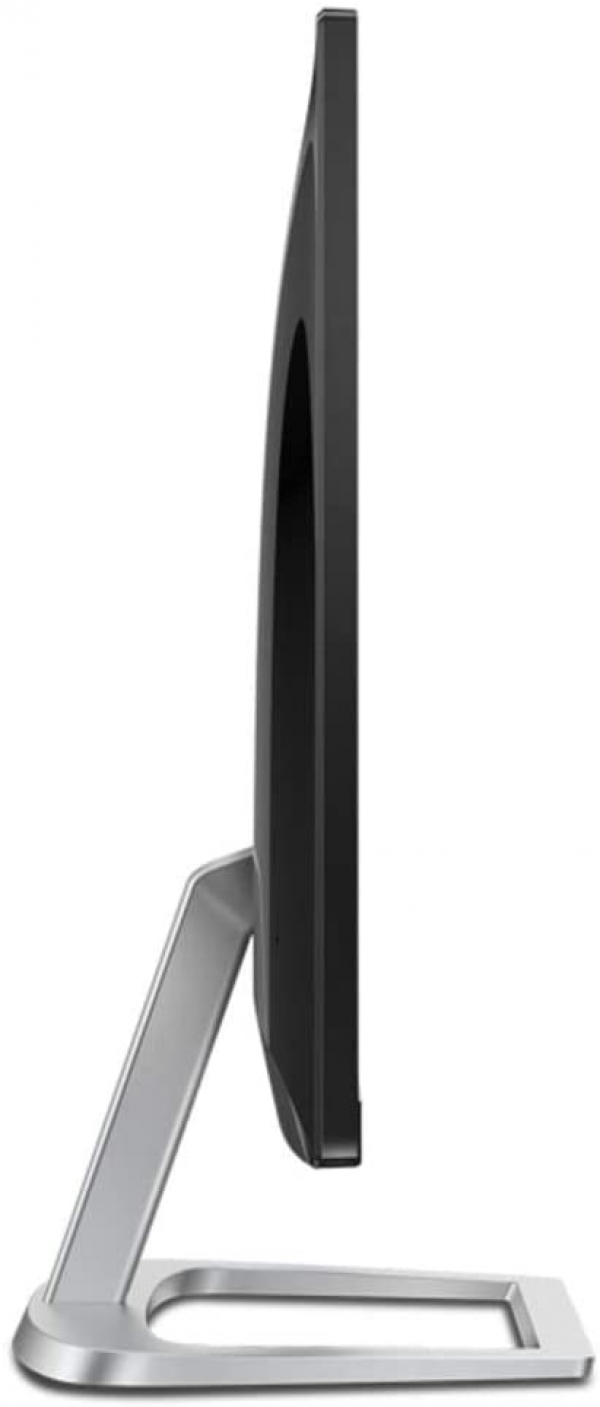
Reactivity
The Philips 276E9 does not use Pulse Width Modulation (PWM) to adjust the brightness. It therefore does not flicker and does not cause headaches in the most sensitive people. It also offers a blue light filter.
This monitor manages FreeSync between 50 and 75 Hz and therefore works optimally when the graphics card sends between 50 and 75 images per second: a fairly small range, but suitable for the Full HD definition of the screen. In the operating range, fluidity is at the rendezvous and the image does not suffer from tearing problems or jerks (micro-stuttering).
We measured the remanence time at 12 ms with the overdrive set to "Faster". This value limits ghosting. Beyond that ("Fastest" setting), a very unpleasant reverse ghosting effect appears. Finally, we measured the delay in display (input lag) at 9.6 ms (60 Hz). There is thus no offset between the source and the display on the monitor.
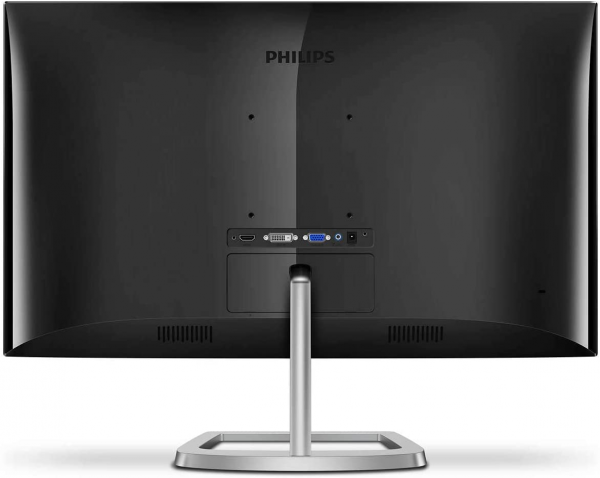
Conclusion
Philips offers a Wide Color Gamut monitor supposed to display extended colors, but it would already have to content itself with correctly displaying standard colors, which is not its case. It is all the more unfortunate that the gamma and the temperature are fairly well managed. For the rest, it's an entry level monitor with limited ergonomics and no USB hub. It still has one advantage: its very low power consumption, but that's about it.

Specifications

